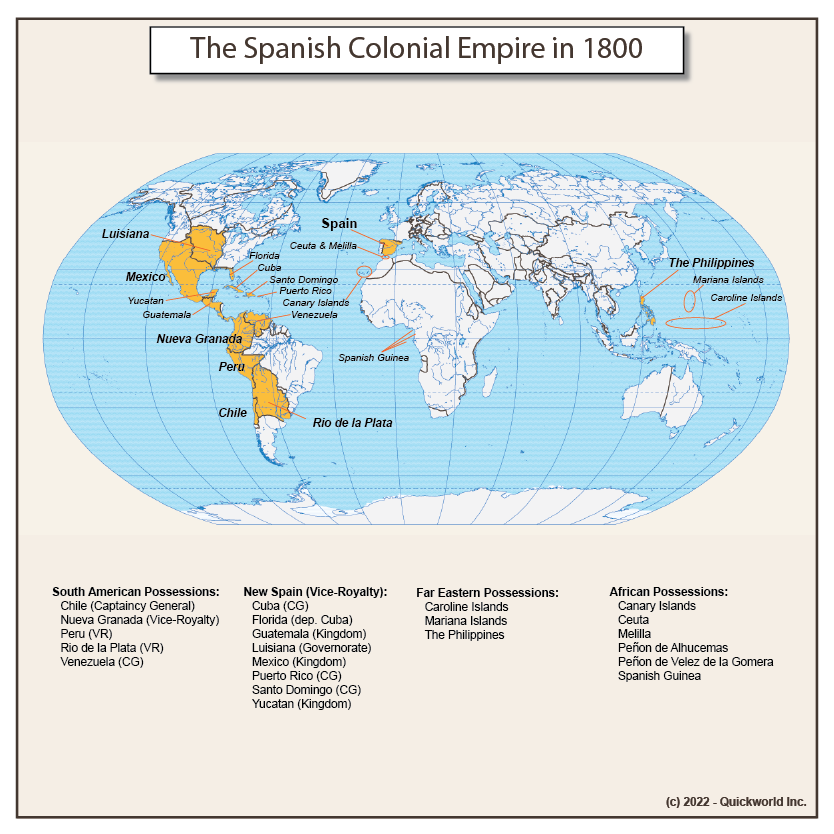Christopher Columbus's discovery of the New World in 1492 started one of the most formidable colonial empires in history. The kings of Spain, who had sponsored Columbus's voyage, quickly sent "conquistadores" and eventually took over the Aztec Empire (Cortes, 1521), and the Inca Empire (Pizarro, 1532). In doing so, Spain not only defeated in quick order the two greatest civilizations the Americas had known until then, it also ensured its own leadership in that region of the World for several centuries.
By 1800, the domination of Spain covered most of South America, except the Western part that was under Portuguese control and the Southern tip that was still under native control. All of Meso-America was also under Spanish control all the way to what is now Northern California. After much fighting with the French and British, they also administered Louisiana and Florida. The three largest Caribbean islands (Cuba, Eastern Hispaniola and Puerto Rico) were also under Spanish rule, while smaller islands had been lost to the British and the Eastern part of Hispaniola was administered by France.
In Africa, Spain only had small possessions on the Moroccan coast and islands such as the Canaries, Fernando Poo and Annobon. In the Far East, Spain had conquered the Philippines, the Marianas and the Caroline Islands in the Pacific. The most interesting fact about this is that, unlike their European counterparts, Spain reached the Far East from North America, having circumnavigated the Earth from in East to West.
That domination, however, was about to collapse. Unrest in the American colonies led to Spain losing all its Continental possessions in the first half of the 19th Century. Except for its African islands, all island possessions were lost by the end of the nineteenth Century. Cuba, Puerto Rico and the Philippines were the last ones to go after the Spanish-American War in 1898.
More on Spain
The Spanish Colonial Empire in 1800


